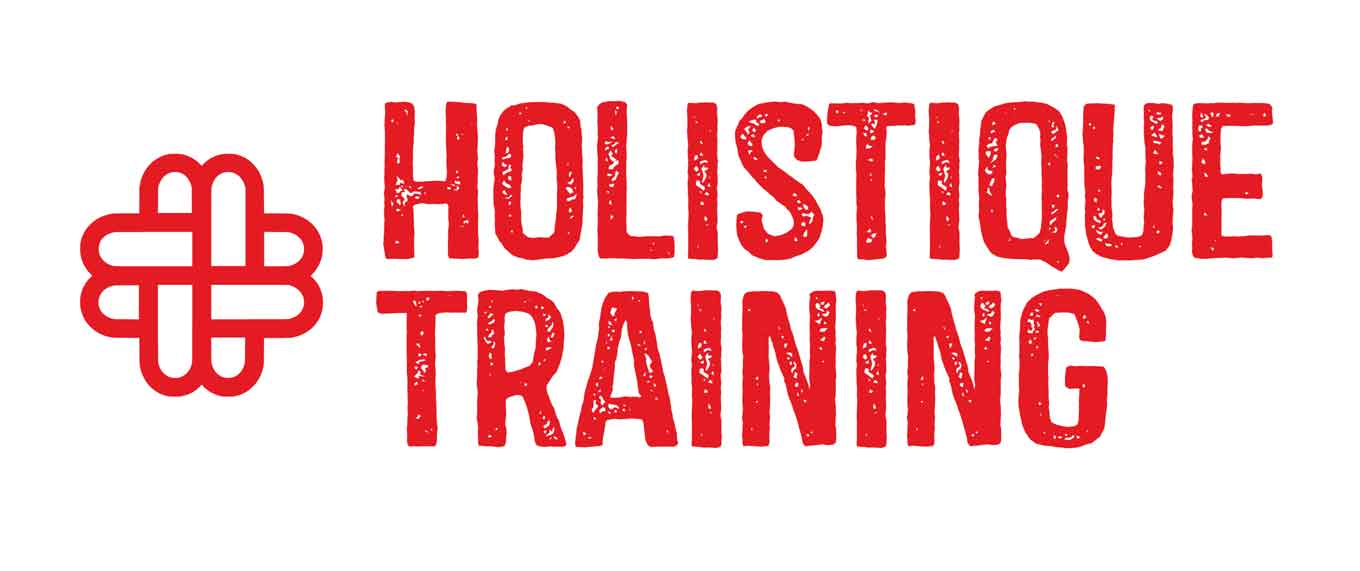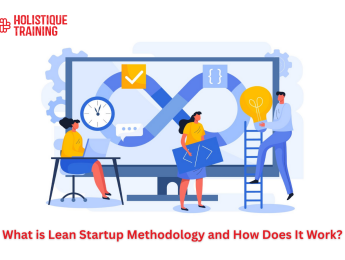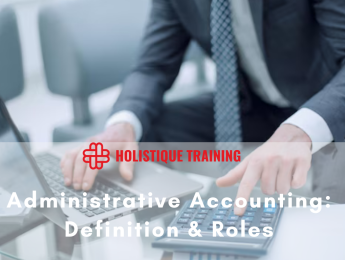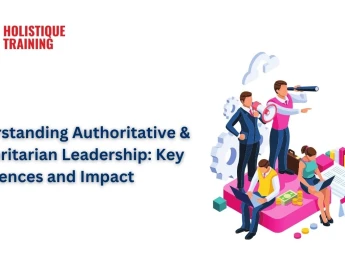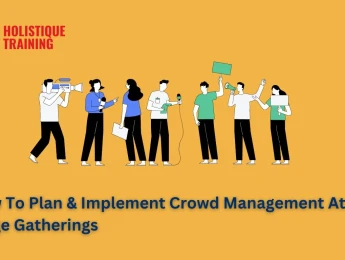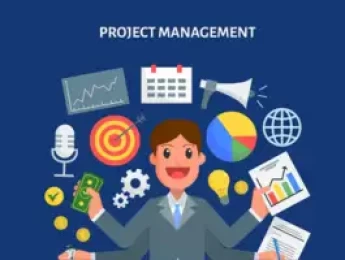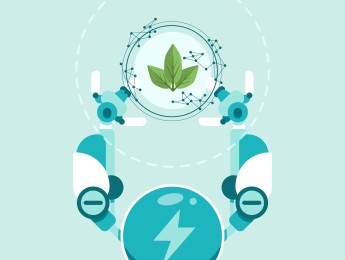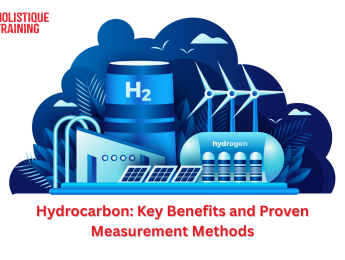- Table of Contents
- 1. Introduction
- 2. The Role of a Competency Matrix in Project Management
- Supporting Decision-Making
- Enabling Fair Task Distribution
- Improving Performance and Training
- 3. Core Competencies for Project Managers
- Leadership and Decision-Making
- Communication and Negotiation
- Time and Resource Management
- Risk Management
- 4. Technical Skills vs. Soft Skills: A Balanced Perspective
- Technical Skills
- Soft Skills
- 5. How to Design a Competency and Skills Matrix
- Identifying Essential Skills and Competencies
- Defining Proficiency Levels
- Mapping Skills to Roles and Responsibilities
- 6. Using the Matrix for Team Development and Training Plans
- Identifying Training Gaps
- Creating Individual Development Plans (IDPs)
- Supporting Succession Planning
- 7. Case Study: Competency Matrix in Action
- Scenario
- Application
- Outcomes
- 8. Best Practices and Tools for Implementation
- Practical Tips for Effective Implementation
- Recommended Tools for Building and Managing the Matrix
- 9. Conclusion
1. Introduction
In the evolving field of project management, a well-structured Competency and Skills Matrix serves as a critical strategic tool. It enables organisations to identify, map, and evaluate the skills and capabilities required for effective project execution. This matrix not only supports talent management and development but also enhances team performance and project outcomes.
Understanding the difference between a "skill" and a "competency" is essential. A skill is typically a learned ability or technique—such as using project management software or preparing reports. In contrast, a competency encompasses a combination of skills, behaviours, knowledge, and attitudes that enable an individual to perform effectively in a role.
Modern project teams operate in fast-paced, cross-functional environments. The Competency and Skills Matrix has thus become invaluable in assessing team readiness, identifying development needs, and ensuring the right talent is assigned to the right roles.
In this article, we will discuss the strategic role of the Competency and Skills Matrix in project management, explore core competencies, highlight the balance between technical and soft skills, and guide you through building and using the matrix effectively.
2. The Role of a Competency Matrix in Project Management
Supporting Decision-Making
One of the most valuable functions of a Competency Matrix is its ability to support informed, evidence-based decision-making. Rather than depending on assumptions or anecdotal impressions of team members’ abilities, project managers are equipped with a structured overview of who possesses which skills, at what level, and how those competencies align with project needs. This clarity significantly accelerates resource allocation—whether it's selecting a team lead for a high-stakes deliverable or identifying backup personnel for critical tasks. The matrix thus enhances responsiveness, reduces delays in staffing decisions, and supports project agility in dynamic environments.
Enabling Fair Task Distribution
In many project environments, task assignments can inadvertently be influenced by bias, familiarity, or convenience. The Competency Matrix counters this by providing a transparent and objective framework for task distribution. Each team member is assessed against consistent criteria, ensuring that responsibilities are matched to capability—not assumptions. This merit-based approach fosters fairness, minimises role ambiguity, and encourages accountability. Over time, such practices build trust within teams and contribute to a culture of equity and mutual respect, ultimately increasing engagement and productivity.
Improving Performance and Training
Beyond short-term project execution, the matrix plays a crucial role in long-term team development. By comparing existing competencies against those required for current and future projects, managers can identify skill gaps at both individual and team levels. These insights enable the creation of targeted learning pathways—be it on-the-job mentoring, specialised workshops, or formal certifications. The proactive use of the matrix ensures that training investments are strategic and measurable, directly tied to organisational goals. Furthermore, reducing competency mismatches helps mitigate risks such as project delays, quality issues, or team burnout.
For an in-depth guide on how to build and use skills matrices in project environments, the Association for Talent Development (ATD) offers practical frameworks and templates.
3. Core Competencies for Project Managers
In today’s increasingly complex business environments, project managers are expected to navigate multifaceted challenges that demand a wide spectrum of competencies. These go far beyond task coordination—they include leadership, communication, strategic thinking, and the ability to manage people, time, and risk in an ever-shifting landscape. Below is a detailed exploration of the four most critical competencies and why they are essential for project success.
Leadership and Decision-Making
Leadership is the cornerstone of successful project delivery. It entails not only directing activities and setting goals, but also cultivating a cohesive vision and building trust across diverse teams. Effective project leaders must possess emotional intelligence, empathy, and resilience to drive their teams through high-stakes, high-pressure environments.
A 2022 study published in the International Journal of Project Management found that strong leadership, particularly when combined with participative decision-making, has a direct and positive impact on team performance and stakeholder satisfaction. The study emphasised that emotionally intelligent leaders are more likely to build high-performing teams and manage interpersonal conflict constructively.
Decision-making is intrinsically tied to leadership. Project managers must often make rapid choices in uncertain conditions, and those decisions need to balance short-term progress with long-term strategic goals. Sound judgement, data analysis, and risk awareness are all essential in this regard.
Communication and Negotiation
Project managers act as conduits between various stakeholders—clients, executives, suppliers, and the internal team. As such, the ability to communicate effectively, clearly, and consistently is paramount. Communication is not just about transferring information; it’s about alignment, transparency, and clarity of purpose.
According to a survey by the Project Management Institute (PMI), poor communication is cited as a primary cause of project failure in over one-third of cases globally. The same report revealed that high-performing organisations are twice as likely to have formal communication plans in place.
Negotiation, meanwhile, extends communication into the realm of influence. Whether securing buy-in for a new deadline, resolving team conflicts, or negotiating vendor contracts, project managers must be persuasive, fair, and pragmatic. Mastery of negotiation supports smoother workflows and helps balance conflicting interests without derailing the project.
Time and Resource Management
Efficiently managing time and resources is a foundational project management skill. Without this competency, even the best-laid strategies can falter due to missed deadlines or resource bottlenecks. Planning ahead, prioritising tasks, adjusting schedules, and keeping team workloads balanced are all core to this capability.
Successful project managers often rely on tools like Gantt charts, time-blocking, and project dashboards to visualise progress and spot potential delays early. They also account for human variables—fatigue, team morale, and availability—to make realistic and humane project schedules.
Risk Management
Every project is exposed to uncertainty. Skilled project managers are not those who simply react to crises, but those who foresee them and plan accordingly. This involves identifying potential risks, evaluating their impact and likelihood, and implementing proactive mitigation strategies.
In a 2021 report by Harvard Business Review, risk management was identified as one of the top five predictors of project resilience during the COVID-19 crisis. Companies with well-developed risk matrices and scenario planning were able to adapt more quickly, retain clients, and reallocate resources without major disruption.
Risk management also fosters a culture of accountability and continuous improvement. When teams are encouraged to report issues early—without fear of blame—organisations can resolve them more effectively and build institutional knowledge that benefits future projects.
Core Competencies Summary Table
Core Competency | Description |
Leadership | Guiding the team with vision, empathy, and sound judgement |
Communication | Ensuring clarity, alignment, and consistent messaging across channels |
Resource Management | Planning and optimising time, human capital, and physical resources |
Risk Management | Anticipating and addressing threats to delivery and stakeholder trust |
4. Technical Skills vs. Soft Skills: A Balanced Perspective
In the realm of project management, success relies not only on what tools and methodologies you know, but also on how effectively you interact with people. A high-performing project manager must demonstrate both technical and soft skills in equal measure. Striking a balance between the two allows for operational excellence and strong team dynamics.
Technical Skills
These are the hard, measurable abilities needed to perform specific functions within the project lifecycle. They often relate to systems, tools, methodologies, or domain knowledge. Technical skills ensure that a project manager can plan, monitor, and deliver project components using structured techniques and tools.
A project manager proficient in Gantt chart creation, cost estimation, and Agile sprint planning, for example, brings precision and predictability to project execution. According to the PMI Pulse of the Profession Report (2020), technical proficiency increases the likelihood of project success by up to 40% when paired with sound methodology.
Soft Skills
Soft skills, often referred to as behavioural or interpersonal skills, are less tangible but equally critical. They allow project managers to build trust, resolve conflicts, manage stakeholder expectations, and keep teams motivated. In high-stress environments, emotional intelligence, adaptability, and listening skills often matter more than certifications.
Detailed Skills Breakdown Table
Category | Skill Area | Examples |
Technical | Project Planning | Gantt charts, Work Breakdown Structures (WBS), milestone scheduling |
| Project Tools & Software | MS Project, Jira, Trello, Primavera, Monday.com |
| Budgeting & Cost Control | Estimating costs, ROI analysis, forecasting tools |
| Methodologies & Frameworks | Agile, SCRUM, Waterfall, PRINCE2, Lean Six Sigma |
| Risk & Data Analysis | Monte Carlo simulations, risk registers, data visualisation (e.g. Power BI) |
Soft | Communication | Verbal and written clarity, stakeholder engagement, report writing |
| Emotional Intelligence | Self-awareness, empathy, emotional regulation |
| Teamwork & Collaboration | Delegation, cross-functional coordination, managing group dynamics |
| Conflict Resolution | Mediation, active listening, consensus building |
| Time & Stress Management | Prioritisation, deadline management, maintaining performance under pressure |
| Adaptability | Coping with change, creative problem-solving, agility |
By understanding and cultivating both categories of skills, project managers position themselves to lead teams with precision and empathy—resulting in stronger outcomes and better working relationships.
5. How to Design a Competency and Skills Matrix
A well-structured Competency and Skills Matrix provides clarity, transparency, and strategic direction to organisations aiming to align talent with business objectives. Here's a step-by-step guide to designing one effectively:
Identifying Essential Skills and Competencies
Begin by compiling a comprehensive list of skills relevant to the project or organisational function. This includes technical (e.g., system architecture knowledge), managerial (e.g., delegation, planning), and behavioural (e.g., critical thinking, resilience) competencies. Engaging department heads, team leaders, and HR specialists in this process ensures the matrix reflects actual operational needs.
It’s recommended to categorise skills by function and complexity to help ensure alignment with specific roles. This also facilitates comparison between individuals working in similar capacities.
Defining Proficiency Levels
Once the competencies are defined, create a consistent and objective scale to rate them. A typical 4-level model is:
- Level 1: Beginner – Basic understanding; requires supervision
- Level 2: Intermediate – Performs tasks independently under normal conditions
- Level 3: Advanced – Deep expertise and can mentor others
- Level 4: Expert – Recognised authority; leads innovation and strategy
This standardisation ensures fairness in evaluation and provides a roadmap for career progression and training.
Mapping Skills to Roles and Responsibilities
Create a matrix table where rows represent team members and columns represent skill areas. Each cell is filled with the individual's current proficiency level. This visualisation makes it easy to identify over- or under-skilled roles, prepare tailored learning plans, and build well-rounded teams.
Example Matrix:
Team Member | Leadership | Communication | Agile Knowledge | Risk Management |
John | 3 | 4 | 2 | 3 |
Maria | 4 | 3 | 3 | 2 |
Ahmed | 2 | 2 | 4 | 4 |
This approach ensures that organisational capacity can be both assessed and improved systematically.
6. Using the Matrix for Team Development and Training Plans
Once a Competency and Skills Matrix is implemented, it becomes a powerful tool for workforce planning and personal development.
Identifying Training Gaps
The matrix enables immediate visibility into areas where skills are lacking. For example, if several team members score below Level 2 in agile methodology, it highlights a training need that could be addressed with a workshop or online certification. This method avoids guesswork and ensures that learning investments are data-driven.
According to a 2023 LinkedIn Workplace Learning Report, organisations that base their training programmes on data from tools like skills matrices saw a 26% increase in training efficiency and ROI.
Creating Individual Development Plans (IDPs)
The matrix also supports career planning. Managers can co-create IDPs with each employee based on their skill levels and career aspirations. This encourages autonomy and goal-oriented learning, while giving HR insight into future leadership potential or succession candidates.
Supporting Succession Planning
Finally, a dynamic matrix can help identify high-potential employees ready to take on more responsibility. Tracking their growth over time allows organisations to prepare for leadership transitions and reduce disruption during turnover or scaling. It’s not only about “who’s ready now” but “who can be ready next”.
7. Case Study: Competency Matrix in Action
Scenario
A mid-sized software development firm in the UK was facing chronic delays in project delivery. Despite hiring skilled professionals, tasks were being misassigned, and team morale was declining due to role confusion and performance anxiety.
Application
In response, the company implemented a full-scale competency matrix across its project teams. Skill levels were evaluated using self-assessments, peer reviews, and manager feedback. This data was then visualised in a shared dashboard accessible to project leaders and HR.
Outcomes
After six months, the company reported a 20% reduction in project delays, a notable improvement in internal mobility, and higher employee satisfaction, particularly among junior staff who appreciated clearer expectations and training opportunities.
8. Best Practices and Tools for Implementation
Implementing a Competency and Skills Matrix is most effective when guided by clear strategy, consistent execution, and the right digital tools. Below are expanded best practices to maximise the matrix’s impact on project performance and team development:
Practical Tips for Effective Implementation
- Use clear, consistent terminology – Avoid ambiguity by defining each competency and skill in precise terms. For example, instead of using vague categories like “leadership,” break it down into “decision-making,” “team motivation,” or “strategic delegation.” Clear language ensures that everyone interprets the matrix the same way.
- Encourage self-assessment alongside manager evaluations – Combining employee self-ratings with line manager evaluations creates a more balanced, reflective assessment process. This dual-input approach fosters ownership, boosts self-awareness, and surfaces skill gaps that may not be visible through top-down appraisal alone.
- Update the matrix regularly – A skills matrix is a living document, not a one-off report. Update it quarterly or after major projects, training sessions, or role changes. This keeps the data relevant and ensures decisions—whether for task assignment or training investment—are based on current capabilities.
- Align the matrix with performance reviews – Integrating the matrix into annual appraisals and development reviews ensures consistency between evaluation and development planning. It also reinforces the idea that competency tracking is part of the organisation’s long-term strategy.
- Communicate the purpose transparently – Be clear with your team about why the matrix is being used: not to judge, but to support development, fairness, and better project outcomes. This helps avoid resistance or misunderstanding and encourages active participation.
Recommended Tools for Building and Managing the Matrix
- Excel or Google Sheets – These tools are ideal for small to mid-sized teams. They offer full customisability and are easy to share across departments. Templates can include drop-down scales, conditional formatting for colour-coded skill levels, and filters to sort by role or department.
- Trello or Monday.com – These project management platforms can be adapted to track skills visually using cards, tags, and boards. For example, each skill can be a card, and team members can be assigned to skills they’ve mastered or are developing.
- HR Software Platforms (e.g., BambooHR, Zoho People, SAP SuccessFactors) – These tools offer built-in features for tracking employee competencies, running reports, and linking training plans to specific skills. Some platforms integrate with Learning Management Systems (LMS), enabling automatic updates when team members complete online courses.
By digitising the competency matrix, organisations benefit from real-time visibility, automated progress tracking, and seamless alignment with broader talent development strategies.
9. Conclusion
A Competency and Skills Matrix is not merely an administrative tool—it's a strategic enabler of organisational agility, resilience, and growth. When applied effectively, it transforms how teams are structured, how training is prioritised, and how future leaders are identified. By bridging the gap between individual capabilities and organisational goals, the matrix empowers project managers to make informed decisions, cultivate talent, and adapt to evolving demands with confidence.
Crucially, success lies not just in building the matrix, but in maintaining and embedding it into everyday practice. When updated regularly and used to guide personalised development plans, the matrix evolves into a vital management resource—driving not only project success but long-term career growth and team engagement. Now more than ever, project leaders should begin mapping competencies across their teams to build a workforce that is not only skilled, but strategically prepared for the future.
